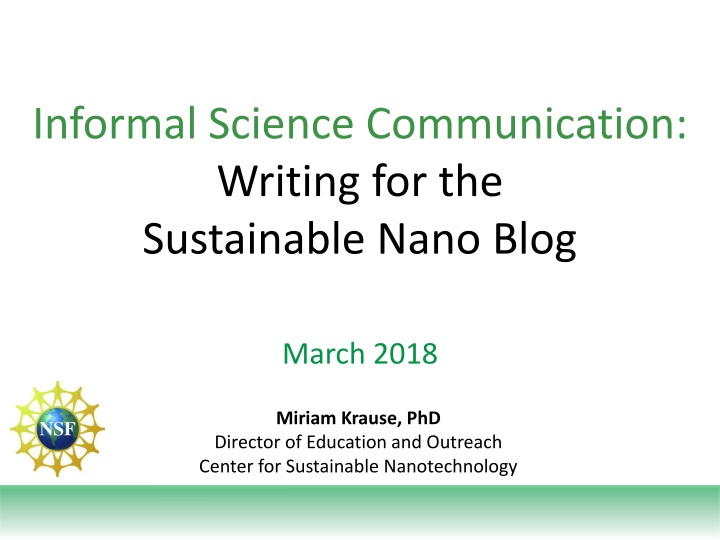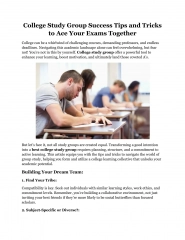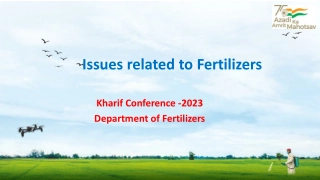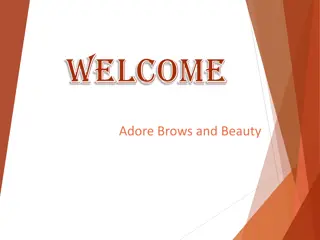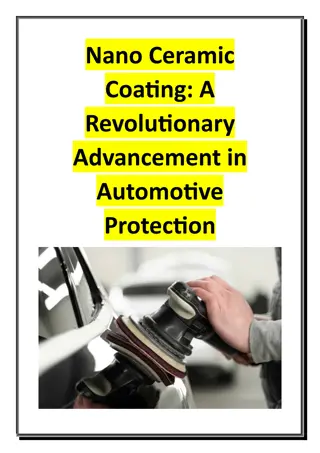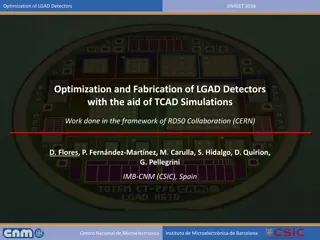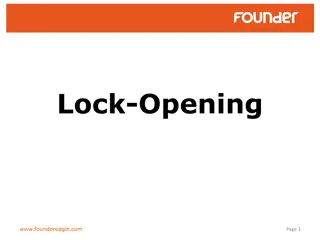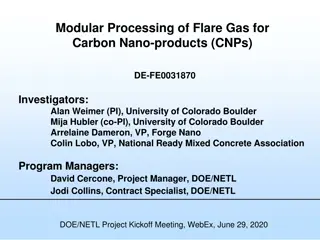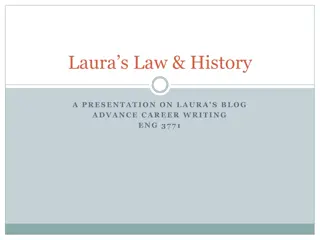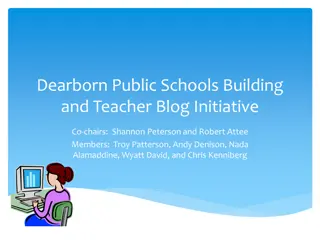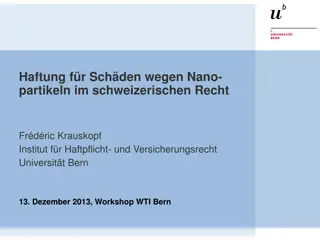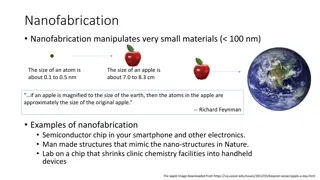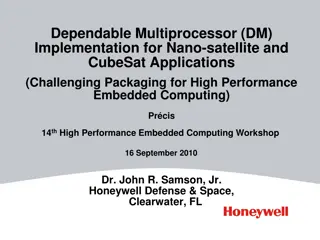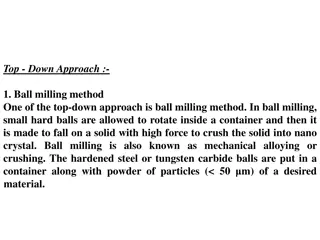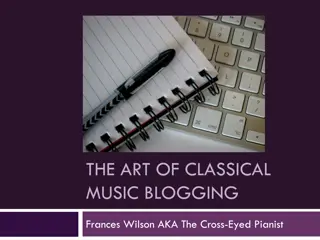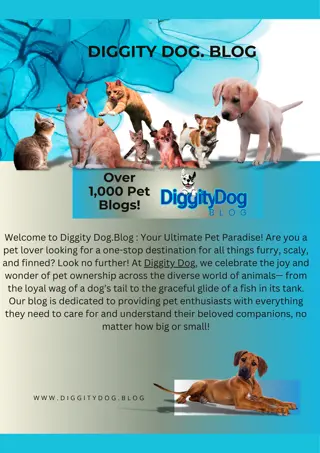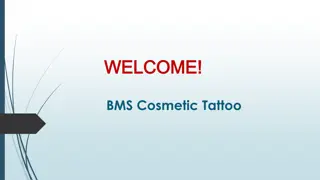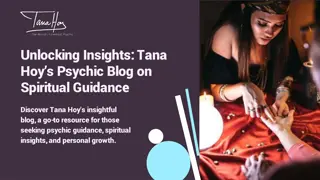Unlocking Sustainable Nano Blog Tips
Dive into the world of informal science communication with Miriam Krause, PhD, as she shares insights on writing for the Sustainable Nano Blog. Explore topics, writing strategies, and more to enhance public engagement with nanotechnology and sustainability.
Download Presentation

Please find below an Image/Link to download the presentation.
The content on the website is provided AS IS for your information and personal use only. It may not be sold, licensed, or shared on other websites without obtaining consent from the author.If you encounter any issues during the download, it is possible that the publisher has removed the file from their server.
You are allowed to download the files provided on this website for personal or commercial use, subject to the condition that they are used lawfully. All files are the property of their respective owners.
The content on the website is provided AS IS for your information and personal use only. It may not be sold, licensed, or shared on other websites without obtaining consent from the author.
E N D
Presentation Transcript
Informal Science Communication: Writing for the Sustainable Nano Blog March 2018 Miriam Krause, PhD Director of Education and Outreach Center for Sustainable Nanotechnology
Outline Outline Why do we have a blog? How do I decide what to write about? Once I ve decided, how do I start writing? A few other things to keep in mind Beyond the blog 2 Image from publicdomainpictures.net
Why do we have a blog? Goal of CSN informal science communication (ISC): Enhance the understandingof and engagement with nanotechnology and sustainability by the general public. AND provide ISC experience for CSN members! 3
Sustainable Sustainable- -Nano.com: T Nano.com: The CSN Outreach he CSN Outreach H Hub ub Link to Spanish language site Links to K-12 resources & hands-on activities Open-source and primary references Links to Social Media Links to podcast episodes 4 CAISE: informalscience.org NISEnet: nisenet.org
Who Writes Blog Posts? Who Writes Blog Posts? 98 100 Authors include 35 graduate students & 12 faculty members 90 80 Number of Posts 70 60 55 50 40 40 30 18 20 10 9 7 10 3 2 0 Total = 242 posts as of March 2018 5 The peer editing team
How do I pick a topic? How do I pick a topic? 1. Almost anything! 2. Nanotechnology, Sustainability, and Life in Science 3. What is fun/interesting for you to talk about? How does your instrument work? What s a cool finding from a paper you just read (or wrote)? What question did you/your undergrad student/roommate/child etc. recently ask? What random thing have you been thinking about? 4. Brainstorm with friends 5. Check out Twitter/Facebook/blog ideas google doc 6
A few examples of popular posts A few examples of popular posts 7
4. Brainstorm with friends 4. Brainstorm with friends 8 Tunicate image by Nick Hobgood
Once I have a topic, how do I start writing? A few suggestions: Remember the process is designed to help you Remember the deficit model does not work Start with one thing and go from there Be flexible and have fun 9
Remember the process is designed to help you Step 1: Pitch e-mail me a short summary of your idea Step 2: Draft e-mail your peer editor a rough draft in MS Word Step 3: Editing use track changes in Word, work through 2-3 drafts Step 4: Semi-final draft final edits with me Step 5: Publish! 10
Remember the deficit model does not work Focus on engaging as well as explaining Humanizing science & scientists Accessibility judicious use/explanations of jargon can build relationships 11 Image by Oliver Tacke
Start with one thing and go from there Metaphors/analogies (e.g. check out Wolfram Alpha for scale ideas) Images Anecdotes Key concepts Think hyper-local, relatable, personal This concept of only balls near the surface being able to escape the pit when they are impacted helps to explain why X-ray photoelectron spectroscopy is utilized for surface characterization. 12 Image by 3dman_eu, text by Katrina Carlin
Be flexible and have fun All of these things are FINE: Topic changes Short posts Personal stories Goofy ideas Messy drafts Manuscript image from Dostoyevsky 13
A few other things to keep in mind Who is our audience? Science-curious public Friends, family, colleagues Ages ~14+, though primarily adults aged 20-40 K-12 educators Image from http://www.techpin.com/wp-content/uploads/2010/01/ cool-car-window-decals-3.jpg 14
A few other things to keep in mind Different styles of writing are required for blog vs. academic manuscripts. For example: Precision and detail are not top priorities Often begin with your conclusion or hook Shorter sentences & paragraphs preferred Informal language & humor encouraged 15
Example hooks Before I travelled to Iceland for the first time in August the only thing I really knew about the country was Iceland is green and Greenland is ice. ----------------------------------------------- Did you know that Americans consume a whopping average of 46 million turkeys at Thanksgiving? ----------------------------------------------- The first time I used a hand-held sparkler was just a year ago. As I watched small sparks fly off of it and waved it to leave different trails of light, I wondered, What s in a sparkler and does it have anything to do with nanoscience? Excerpts from Juli Troiano, Mimi Hang, & Natalie Hudson-Smith 16
Informal language examples Aqueous buffer vs. water After performing data analysis, researchers hypothesize that vs. Scientists think Large quantities of turkey are consumed in the U.S. each year at Thanksgiving vs. Did you know that Americans consume a whopping average of 46 million turkeys at Thanksgiving? 17
A few other things to keep in mind Pictures: Worth 1000 words! Also help break up text. Sheaves of Wheat by Van Gogh shows a field full of sheaves of wheat that are mostly brownish yellow but have a surprising amount of blue in them, plus some green at the top that is showing trees Using images:Images must be licensed under creative commons or be in the public domain. Most images on the internet are not okay to use Image from https://commons.wikimedia.org/wiki/File:Van_Gogh_She aves_of_Wheat_with_frame_ DMA_1985-R-80.jpg 18
Our options for images Take the photo or create the image yourself Use a search engine like search.creativecommons.org/ or www.publicdomainpictures.net Ask me to help you find or make an image Use an image from a journal. Send me a link to the journal article as soon as possible so I can obtain permission. (NOTE: ACS journals give immediate approval for use, other journals can take months) 19
A few other things to keep in mind PI Oversight Always an option to ask your PI to read the final draft of your blog post before it s published ESPECIALLY if the topic is anything to do with the work of the lab/CSN Image from http://pixabay.com/en/reading- manual-docs-help-book-man-99244/ 20
Sustainable Nano beyond the blog Social media - Twitter, FB @SustainableNano Podcast - 23 episodes so far Video - collaboration w ACS Reactions, CSN overview, looking for more ideas! 21
I have an idea whats next? Step 1: Pitch e-mail me a short summary of your idea by due date I ll work with you to refine it, then assign a peer editor Step 2: Draft e-mail your peer editor a rough draft in MS Word within ~1 week after we agree on your pitch Ideally aim for approx. 750 words Step 3: Editing use track changes in Word, work through 2-3 drafts until you re both satisfied within 1-2 weeks after first draft feel free to consult me during this process Step 4: Semi-final draft I will suggest some final edits Step 5: Publish! I take care of this 24
Whats next? Step 1: Send me your pitches! I ll work with you to refine, then assign a peer editor Step 2: Draft e-mail your peer editor a rough draft in MS Word within ~1 week after we agree on your pitch Ideally aim for approx. 750 words Step 3: Editing use track changes in Word, work through 2-3 drafts until you re both satisfied within 1-2 weeks after first draft feel free to consult me throughout Step 4: Semi-final draft I will suggest some final edits Step 5: Publish! I take care of this Image by Remi 25
Thats it! Questions? Comments? Pitches? 26
